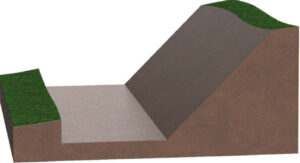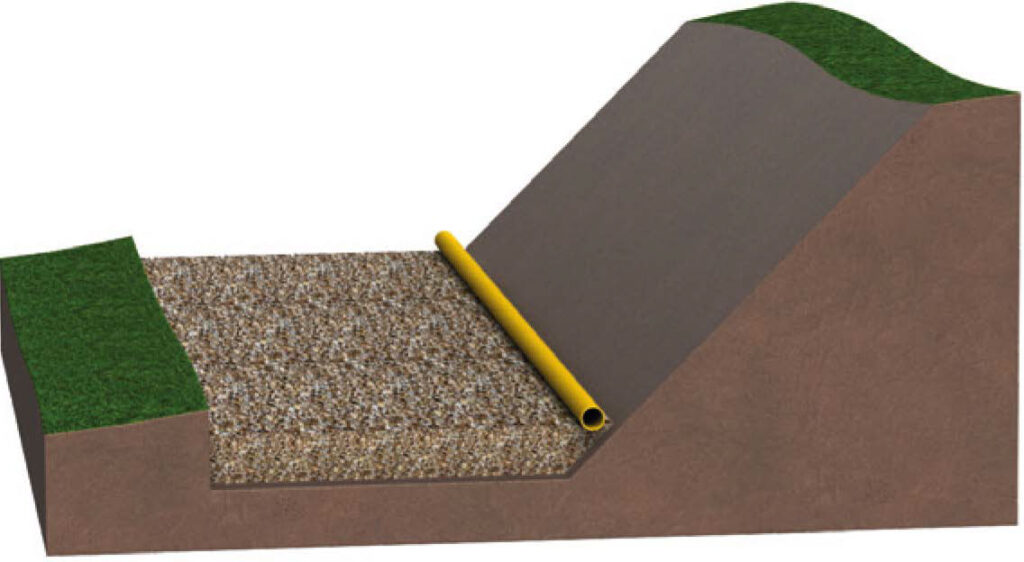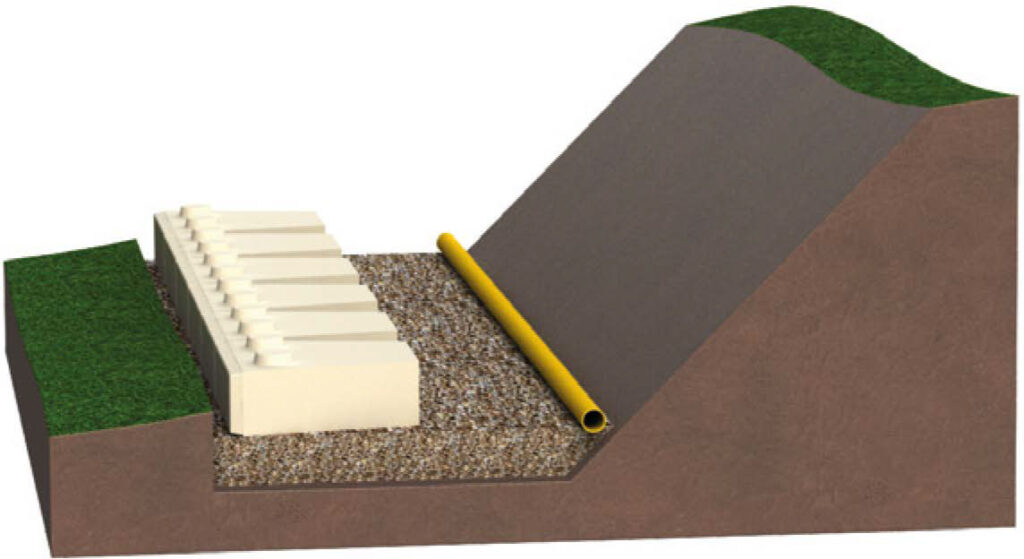CONSTRUCTION
In summary, here are the main construction steps.
1. Excavation
The maximum slope angle must not be exceeded. In the case of free slopes, the angle depends on the existing soil conditions, the slope height, the load and flow through the slope. The slope angle in the as-built condition has a maximum of 45 degrees for the studied soils.

2. Formation level
In Austria, the average height of the formation level is 80 to 100 cm below ground level.
A footing on a frost wall is always possible if the static loads do not require a foundation. The width of the formation level is 20 to 30 cm wider than the base block measures. The formation level must correspond to the ground plan geometry as shown in the plan.
A footing on a foundation is used for large wall heights or retaining walls subject to higher stresses. The foundation is shuttered, reinforced and concreted on a granular subbase made of lean concrete. The foundation must be measured by the structural engineers.

Footing on frost wall

Footing with foundation
3. Laying
When positioning the first block of the base block row, make sure that it is in the correct horizontal position. Subsequent changes in position are to be avoided because they are time-consuming. The rows are to be executed without joints, are level and lie fully on the frost wall or foundation. The base block has no groove on the underside to avoid building up greater frictional resistance. The blocks are to be arranged next to each other without a joint if possible. Gaps are to be filled with square grain (16/32), as is the back of the retaining wall. The other rows are to be laid in stretcher course. Before offsetting, it must be made sure that the surface is clean (free of gravel). The blocks must be pushed horizontally toward the rear as far as they can go (tongue and groove principle). Compaction equipment should be selected in consultation with the installer or structural engineer.

Laying with base blocks


